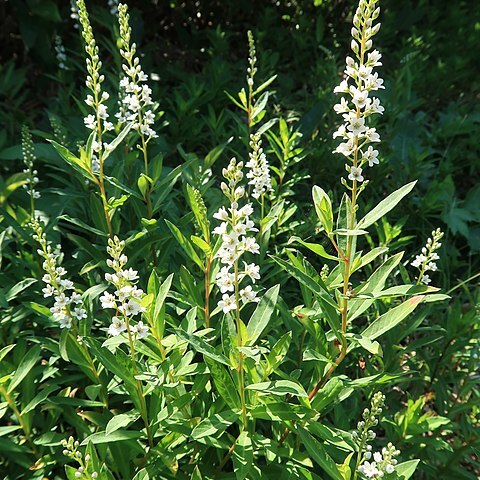Herbs perennial, glabrous, 30--70 cm tall. Rhizomes creeping, reddish. Stems erect, terete, usually simple, glabrescent, black glandular punctate. Leaves alternate, subsessile, oblong-lanceolate to narrowly elliptic, 4--11 X 1--2.5 cm, with many scattered glandular dots, slightly raised when dry, base attenuate, apex short acuminate. Racemes 10--20 cm; bracts lanceolate, 2--3 mm. Pedicel ca. as long as to slightly shorter than bracts. Calyx lobes ovate-elliptic, ca. 1.5 mm, ciliate, thick black glandular, margin membranous, apex obtuse. Corolla white, ca. 3 mm, parted slightly below middle; lobes elliptic to ovate-elliptic, black glandular punctate, apex rounded. Stamens included; filaments adnate to base of corolla lobes, free parts ca. 1 mm; anthers ovate, dorsifixed, ca. 0.5 mm. Ovary ovoid; style ca. 1 mm. Capsule globose, 2--2.5 mm in diam. Fl. Jun-Aug. 2n = 24.
More
A herb. It keeps growing from year to year. It grows 30-70 cm high. It has creeping rhizomes or underground stems. The leaves almost occur opposite one another. They are sword shaped and 5-11 cm long by 2-3 cm wide. They taper at both ends. The flowers are small. They are white and in crowded groups 10-20 cm long at the ends of branches. The fruit is a round capsule.

